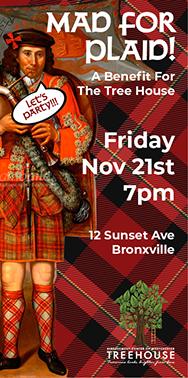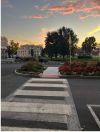From the Mayor: The Origins and Meaning of the Fourth of July

By Mary C. Marvin, Mayor, Village of Bronxville
Jul. 3, 2019: As I walked by our decorative store windows festooned with red, white, and blue, it brought a smile of gratitude for our country and a desire to do more research on the origins and meaning of the Fourth of July. So I went home and did my homework.
Often overlooked, all of the men who signed the Declaration of Independence were truly brave Americans. They gave of themselves beyond measure, fully aware that when they penned their signatures in Philadelphia, it was an act of treason punishable by death. To a man, they were well educated, propertied, and of considerable means and standing who had so much to lose, but as they said, “They valued liberty more.”
The now-famous John Hancock, wealthy merchant, governor of Massachusetts and president of the Second Continental Congress, signed first and so boldly so “the British Ministry first can read my name without spectacles.” As he put the pen down, he said, “May they double their reward.”
Their signing statement written in unanimous accord read, “For the support of this declaration, with firm reliance on the protection of the divine providence, we mutually pledge to each other, our lives, our fortunes and our sacred honor.”
The document was a declaration of freedom that then required a long and arduous war to be fought before our nation declared was a nation in fact.
Of the 56 patriots who signed their names, nine died of wounds during the War of Independence; five were imprisoned for decades; and several had wives, sons, and even entire families killed. One signer lived to see all 13 of his children murdered. Every signer was the target of manhunts with huge bounties on their heads. They lived on the run, leaving prosperous farms, thriving shipping businesses, and law practices. Twelve signers had their homes and property burnt to ruins and 17 lost everything they owned, dying destitute. Yet no one went back on his pledged word.
I delved a little deeper into the writing of this incredibly brave document and found so much more of interest:
- Of the 56 signers, eight were born in Britain.
- At age 26, Edward Rutledge of Charleston, SC, was the youngest signer. He continued a lifetime of government service culminating in the governorship of South Carolina. He died at age 50.
- The oldest was Ben Franklin at age 70.
- Jefferson is credited as the author of the Declaration of Independence. Actually, he was part of a five-person committee appointed by the Continental Congress to write it. They included Benjamin Franklin, John Adams, Robert Livingston, and Roger Sherman.
- After Jefferson wrote an initial draft, the other members of the Declaration Committee made 86 changes, including shortening the overall length by more than a fourth.
- Jefferson was quite unhappy about some of the edits. He had included language condemning the British promotion of the slave trade (even though he was a slave owner), but this language was removed over his vehement objection.
- Though a member of the writing committee, Robert Livingston refused to sign the document, as he believed it was too soon to declare independence.
- One of the most widely held misconceptions is that it was signed on July 4, 1776. In fact, independence was formally declared on July 2, 1776, a date that John Adams believed would be "the most important epoch in the history of America." On July 4, 1776, Congress approved the final text of the Declaration. It wasn't signed until August 2, 1776.
- When George Washington read the document aloud in front of New York City Hall, a raucous crowd cheered and then subsequently tore down a nearby statue of George III. The statue was then melted down and shaped into 42,000 musket balls for the fledging American army.
- There are five references to God in the Declaration of Independence.
- We were often taught that the primary reason the American colonists revolted from British rule was related to taxes, but "taxation without representation" is the 17th among 27 reasons given for seceding.
- The Declaration of Independence spent World War II in Fort Knox. Two weeks after Pearl Harbor, both the Constitution and the Declaration of Independence were packed in 150 pounds of protective gear and escorted via train by Secret Service agents to Louisville.
Only one President, Calvin Coolidge, was born on the Fourth of July.
With incredible poetic justice, on the 50th anniversary of their signing, Jefferson and John Adams died on the Fourth of July within hours of each other and five years to the day, James Monroe also passed away on the Fourth.
Despite all the connected tragedies, John Adams felt the Fourth must be a festive occasion of remembering when writing to Abigail that “the Fourth of July ought to be celebrated by pomp and parade, with shows, games, sports, guns, bells, bonfires, and illuminations from one end of this continent to the other.”
As we are about to enjoy the holiday with family and friends, I believe General Patton said it best about holidays such as the Fourth of July. “We should not mourn the men who died while serving, rather we should thank God that such men lived.”
Pictured here: Mayor Mary Marvin.
Photo by N. Bower
Editor's note: As a public service, MyhometownBronxville publishes articles from local institutions, officeholders, and individuals. MyhometownBronxville does not fact-check statements therein, and any opinions expressed therein do not necessarily reflect the thinking of its staff.
Government & History Directory
Bronxville is a quaint village (one square mile) located just 16 miles north of midtown Manhattan (roughly 30 minutes on the train) and has a population of approximately 6,500. It is known as a premier community with an excellent public school (K-12) and easy access to Manhattan. Bronxville offers many amenities including an attractive business district, a hospital (Lawrence Hospital), public paddle and tennis courts, fine dining at local restaurants, two private country clubs and a community library.
While the earliest settlers of Bronxville date back to the first half of the 18th century, the history of the modern suburb of Bronxville began in 1890 when William Van Duzer Lawrence purchased a farm and commissioned the architect, William A. Bates, to design a planned community of houses for well-known artists and professionals that became a thriving art colony. This community, now called Lawrence Park, is listed on the National register of Historic Places and many of the homes still have artists’ studios. A neighborhood association within Lawrence Park called “The Hilltop Association” keeps this heritage alive with art shows and other events for neighbors.
Bronxville offers many charming neighborhoods as well as a variety of living options for residents including single family homes, town houses, cooperatives and condominiums. One of the chief benefits of living in “the village” is that your children can attend the Bronxville School.
The Bronxville postal zone (10708, known as “Bronxville PO”) includes the village of Bronxville as well as the Chester Heights section of Eastchester, parts of Tuckahoe and the Lawrence Park West, Cedar Knolls, Armour Villa and Longvale sections of Yonkers. Many of these areas have their own distinct character. For instance, the Armour Villa section has many historic homes and even has its own newsletter called “The Villa Voice” which reports on neighborhood news.
Link to Village of Bronxville One Square Mile Monthly Newsletter
Village of Bronxville Administrative Offices
337-6500
Open 9:00am - 4pm excluding holidays and weekends
Bronxville Police Department
337-0500
Open 24 hours
Bronxville Parking Violations
337-2024
Open 9:00am - 4pm excluding holidays and weekends
Bronxville Fire Deparment
793-6400

















